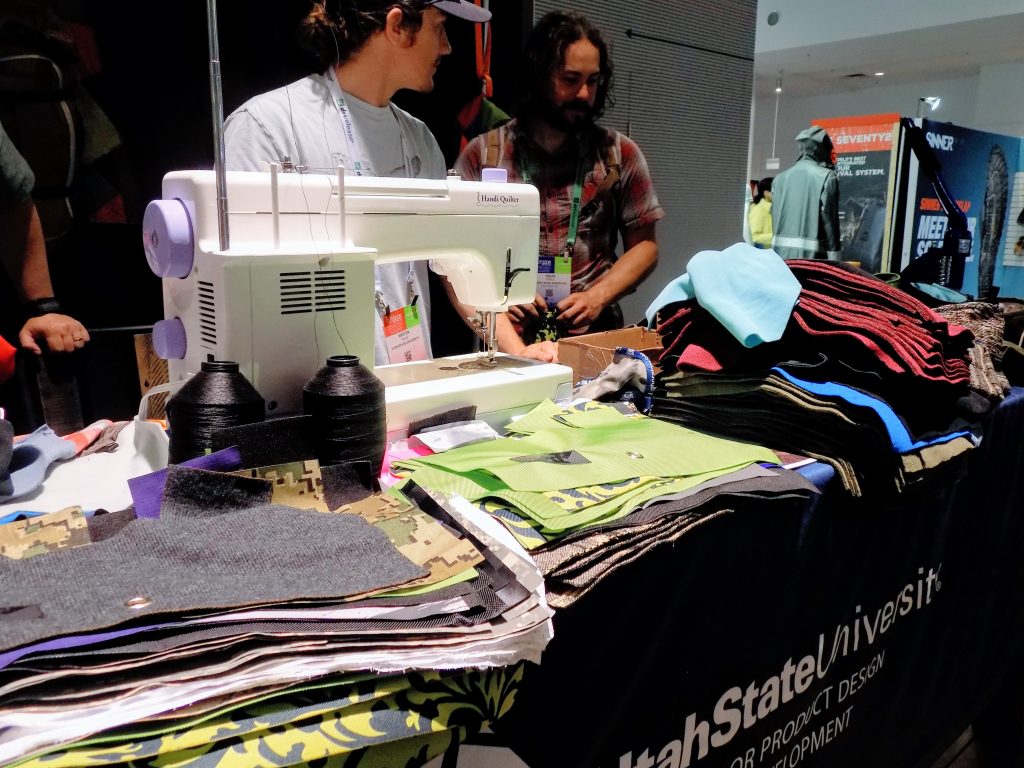Utah State University’s Outdoor Product Design Program
With their first graduating class out the door, the next generation of designers enter the industry with hands-on experience

It’s no secret that the outdoor industry is booming—look no further than the consistent enthusiasm for Patagonia, The North Face, Peak Design and others—not to mention the US government’s $373 billion valuation of the industry. It’s a hotbed for innovative material development, massive collections of utilitarian yet activity-specific gear, and preaches sustainability and resourcefulness. To have designers equipped to handle all of this, programs continue to surface that allow students to get hands-on experience in the industry. Utah State University’s newly formed Outdoor Product Design and Development program is one of the most impressive.

“We have really great footwear classes, hardware classes, and soft goods classes—like apparel,” senior Weston Hills tells us, at the university’s booth during the 2019 Outdoor Retailer: Summer Market. “We’re doing sustainable upcycling,” Hills says. During their four years in the undergraduate program, students are given massive donations of unused material from established outdoor brands that are used to craft one-off products like coats, bags and pants. The students then wear-test their handmade gear.

“We’ve only had our first graduating class,” Hills continues, acknowledging the fact that the program is young—just four years old. “I think you’ll see some students creating their own companies. A lot of us are just trying to get into the industry and get design jobs though.”
While plenty of outdoor brands have launched on platforms like Indiegogo or Kickstarter, the work these students are doing, Hills clarifies, is closer to one-off products by established brands—rather than an upstart brand’s debut collection. Bags constructed from Patagonia’s PolarTec fabric hang alongside upcycled pants made from long strips of waterproof nylon and stretchable mesh.

The students manning the Outdoor Retailer booth were crafting tiny chalk bags for attendees—letting them choose between fabrics on display in front of two sewing machines. The bags certainly have a DIY feel, but are functional and highlight underutilized byproducts of the industry. As brands in attendance bounce between targeting sustainability as a goal and embracing sustainability as the bare minimum, these students positioned themselves as designers knowing no option other than eco-friendliness.
“It’s great for the students and the companies. I can make something from a brand’s fabric in the way I want it,” Hills says. He’s working on a chalk bag for a retail buyer as he answers. “Let me fix those. Let’s make this as professional as we can. It is handmade after all,” he tells the buyer, as he fixes a crooked hem.
The program’s work is showcased on Instagram, offering insight into the next generation of designers poised to populate the annual show’s floors in the near future. If you’re in attendance for the final days of OR, their booth is on the street-level, #24141-SL.
Images by Evan Malachosky












